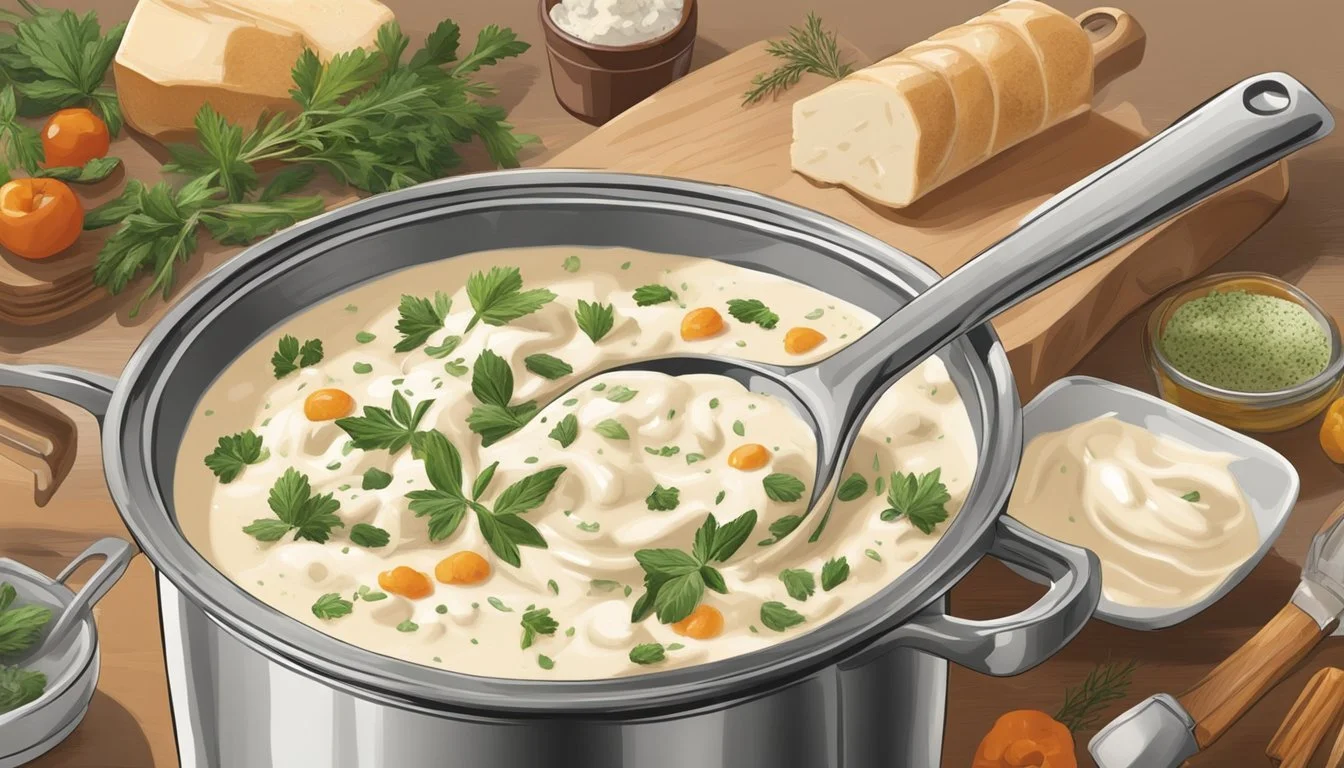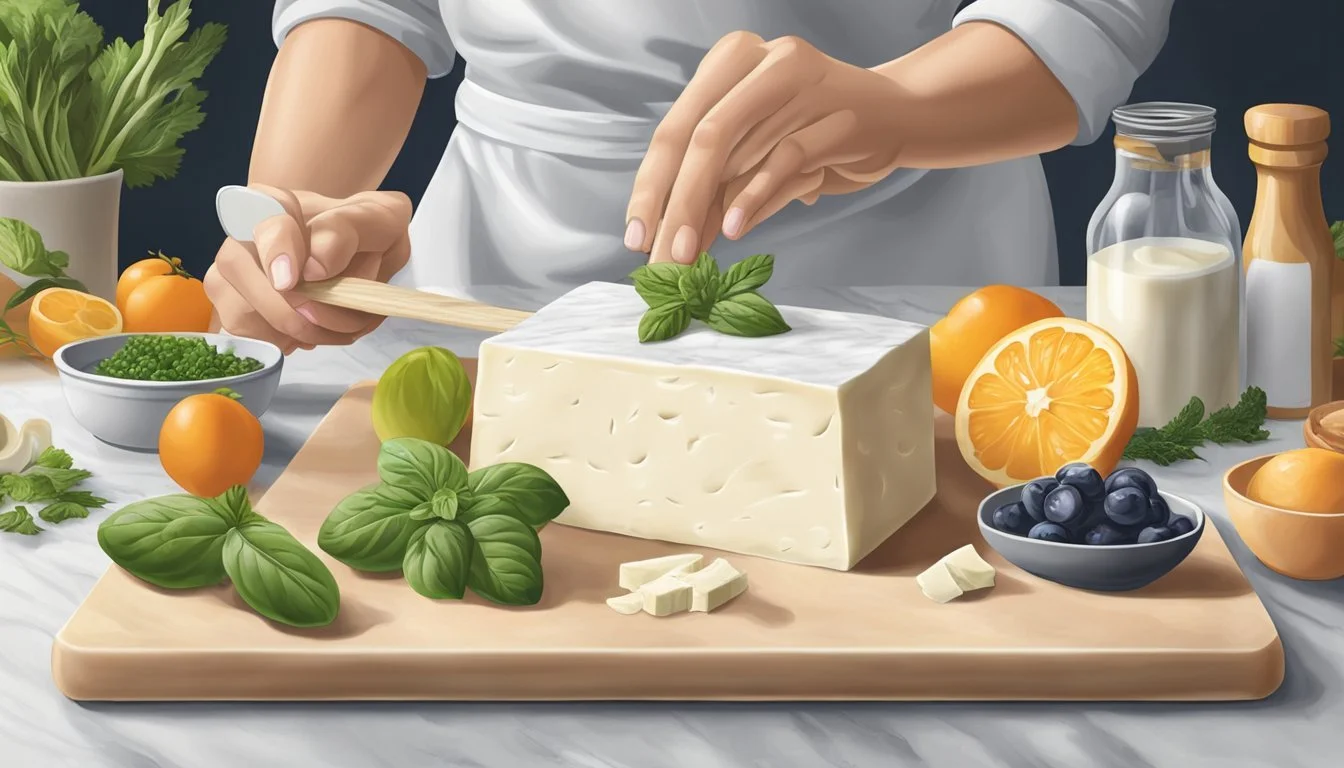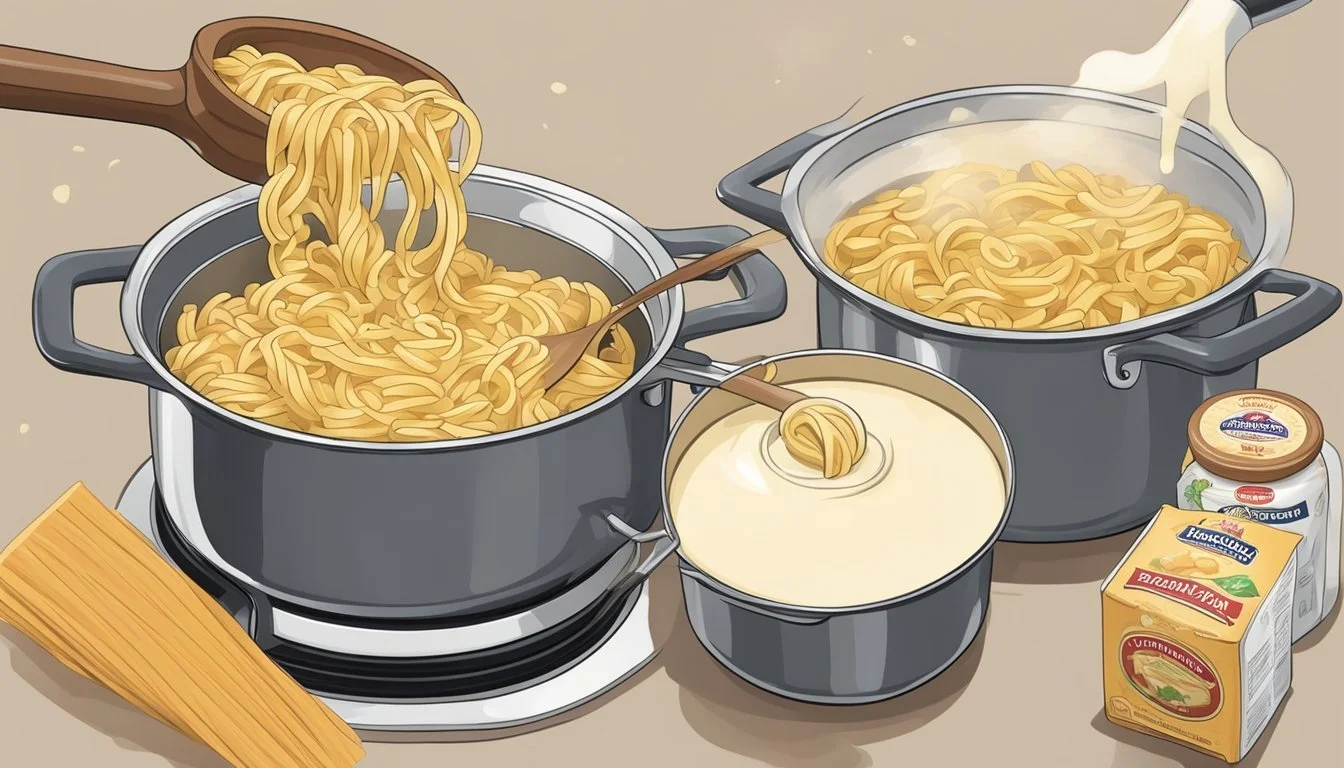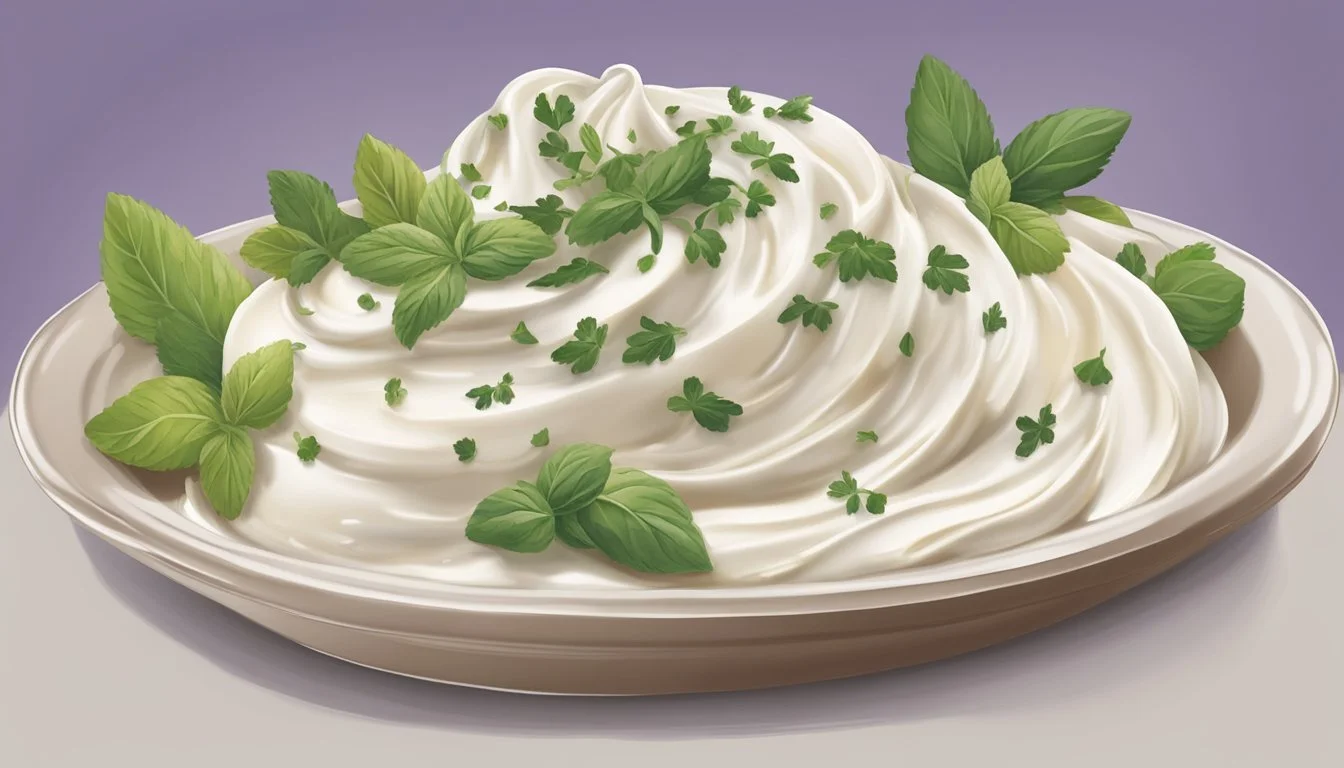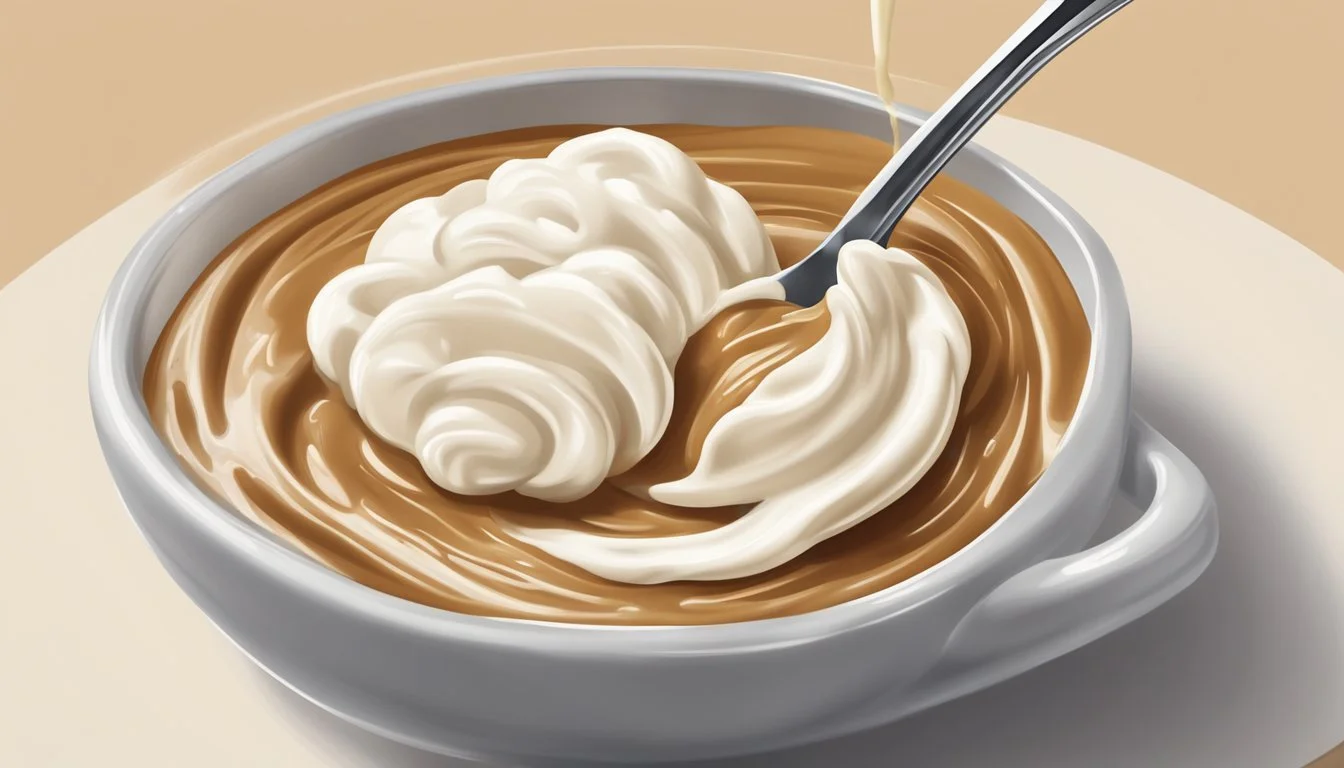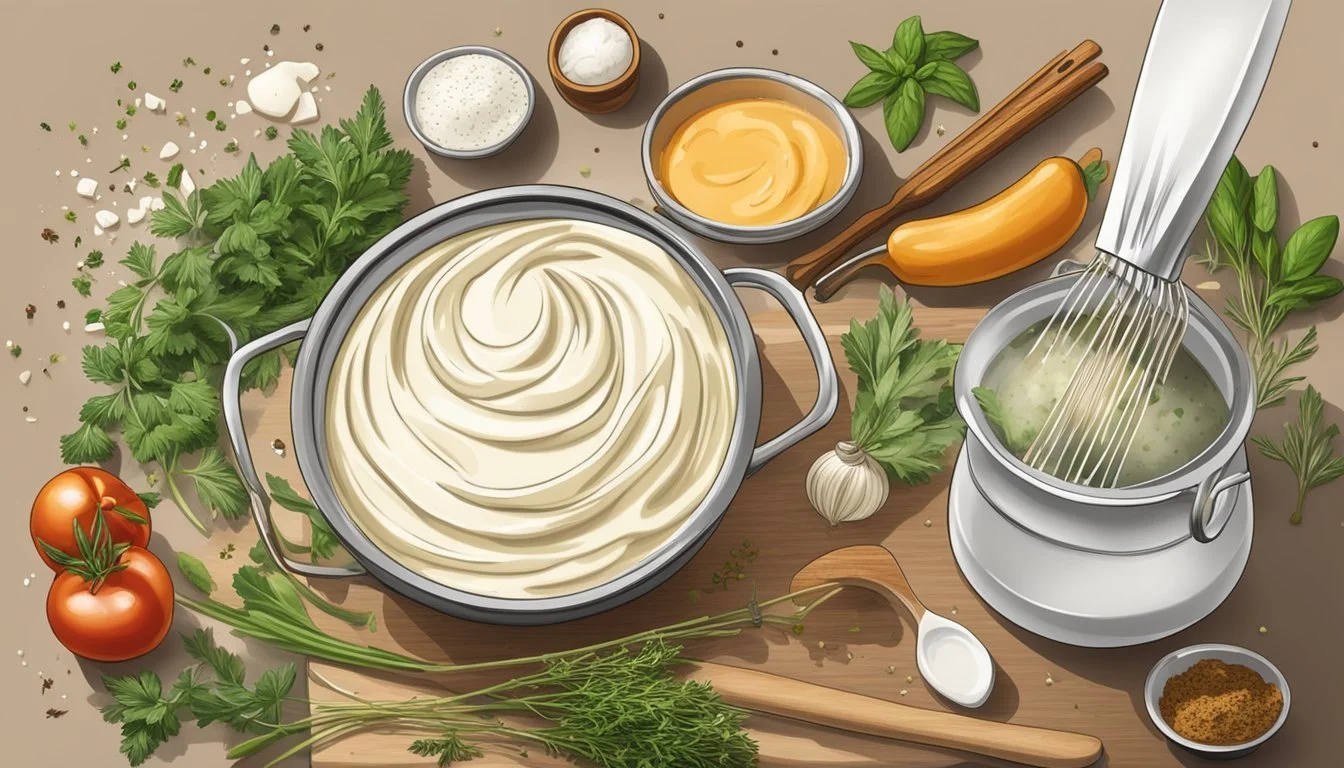How to Cook with Philadelphia Cream Cheese for Rich Sauces
A Guide to Creamy Culinary Delights
Cooking with Philadelphia Cream Cheese opens up a world of culinary possibilities. The cream cheese's (What wine goes well with cheese?) rich texture and mild, creamy flavor make it an exceptional ingredient for crafting luxurious sauces that are both versatile and easy to prepare. Home cooks and chefs alike often incorporate this cream cheese into a variety of dishes to achieve a velvety consistency that enhances pasta (What wine goes well with pasta?), proteins, and vegetables.
The process of creating a sauce with Philadelphia Cream Cheese often begins by melting butter in a saucepan, infusing it with seasonings like garlic and onion powder, and then gently blending in the cream cheese until smooth. This base serves as the canvas for an array of sauces, from the classic Alfredo to modern interpretations that embrace a fusion of flavors.
In sauces, the cream cheese acts as a thickening agent, providing body and creaminess without overpowering the dish's central ingredients. It can be whisked into starchy pasta water for a quick and cohesive mixture or melted with chicken broth for a slightly thicker sauce. Cooks may also fold in additional elements such as Parmesan cheese, herbs, and spices to tailor the taste to their liking, proving that Philadelphia Cream Cheese is a formidable and adaptable foundation for a multitude of sauce recipes.
Selecting Your Ingredients
When preparing rich sauces with Philadelphia cream cheese, selecting quality ingredients is paramount. Cream cheese itself is the star, so opting for the full-fat variety of Philadelphia brand ensures a creamy and consistent base.
For aromatics, garlic adds a depth of flavor; fresh cloves are preferred for their potent taste. Including onion—whether yellow, white, or red—provides a savory sweetness that complements the milder taste of the cream cheese.
Pasta dishes(What wine goes well with pasta dishes?) with cream sauce benefit from a robust, textured pasta like fettuccine or penne that can hold the sauce well. To enrich the dishes further, proteins like chicken, bacon, shrimp, salmon, or sausage can be added. Ensure proteins are fresh or properly thawed if frozen.
Vegetation like peas, corn, and kale contribute color, texture, and nutrients. For a fresher take, lemon zest or juice can provide a zesty contrast to the richness of the sauce.
As for dairy additions, butter is essential for a smooth, velvety sauce. Whole milk or even heavy cream amplifies richness. Parmesan or ricotta cheese can also be incorporated for additional cheesiness and flavor.
Herbs such as basil infuse a sweet and slightly peppery essence. For roux-based sauces, flour acts as a thickening agent, and it should be unbleached for the purest flavor.
Lastly, olive oil is ideal for sautéing ingredients, and pork can be rendered down for an added savory dimension. When combined thoughtfully, these ingredients pave the way for a multitude of delectable creamy sauces.
Preparing for Cooking
Before embarking on the culinary journey of crafting rich sauces with Philadelphia Cream Cheese, one must understand the essentials of pasta selection and protein preparation. Proper foundational steps are crucial for the success of the dish.
Pasta Basics
Selecting the right pasta shape can make a significant difference in the dish’s texture and sauce adherence. For cream cheese pasta, one should opt for pasta that holds sauce well, such as fettuccine or penne. Before cooking, gather the pasta, measure an adequate amount of water, and remember to salt the water to enhance the pasta's flavor. Cooking pasta to al dente, which means it's tender but still slightly firm to the bite, is essential as it prevents the pasta from becoming mushy once combined with the sauce. Reserve the starchy pasta cooking water post-boiling, as it can be used to adjust the consistency of the cream cheese sauce.
Protein Preparation
Incorporating protein like chicken breast (What wine goes well with chicken breast?), shrimp, salmon, or sausage complements the creaminess of a Philadelphia sauce with a rich texture and flavor. For chicken or pork, ensure it's thoroughly cleaned and patted dry before seasoning as desired. One must sear the proteins evenly on both sides to a golden-brown color, ensuring they’re cooked through yet juicy. If using shrimp or pieces of salmon, the cooking time will be shorter, and the proteins should be turned delicately to maintain their structure. Cooked proteins can be set aside and later incorporated into the final pasta dish, combining the succulent flavors with the velvety cream cheese sauce.
Crafting the Cream Cheese Sauce
Creating a cream cheese sauce with Philadelphia cream cheese as the base results in a creamy, rich texture that can enhance any pasta dish. The following subsections break down the process into simple steps, ensuring a smooth and flavorful sauce.
Cream Cheese Foundation
The foundation of any good cream cheese sauce begins with high-quality Philadelphia cream cheese. It's crucial for the cream cheese to be softened before adding it to the saucepan to prevent lumps and achieve a smooth sauce.
Melt butter in a saucepan over medium heat.
Gently whisk in Philadelphia cream cheese until it's well integrated with the butter.
To adjust consistency, slowly add milk or heavy cream, stirring continuously.
Building Flavor
The flavor of the sauce is built by layering seasonings and fresh ingredients. Start with the basics, such as salt and black pepper, and then expand the sauce’s profile depending on the dish.
Incorporate seasonings like garlic powder and onion powder to the melted butter prior to adding the cream cheese.
For added depth, sauté minced garlic, diced onions, or mushrooms before combining with the cream cheese mixture.
Fresh herbs like parsley or Italian seasoning can be stirred in for an aromatic touch.
Enhancing the Sauce
To elevate the cream cheese sauce, additional ingredients should be considered for a more complex flavor. These elements not only boost taste but also contribute to the sauce's texture.
Stir in freshly grated Parmesan cheese for a richer taste and further creaminess.
For a punchier sauce, a splash of lemon juice or white wine can be added.
One can also mix in vegetables like spinach or create a tomato pasta sauce with cream cheese by incorporating tomato sauce and Italian herbs.
By following these steps, one can masterfully craft a luscious Philadelphia cream cheese sauce that's perfect for a variety of Italian-inspired dishes.
Combining Sauce and Pasta
When creating a creamy pasta dish featuring Philadelphia Cream Cheese, the marriage of the sauce with the pasta is crucial. Chefs should aim for a seamless integration that allows each component to shine, ensuring a rich and satisfying experience with every bite.
To start, one should cook the pasta in salted water until it’s just al dente. This offers the perfect texture that holds up to the rich sauce without becoming mushy. It's essentially the canvas awaiting the rich, cheesy blanket of flavor.
Pasta with cream cheese sauce becomes transcendent through the process of emulsification. This is the key to a velvety consistency in sauces like fettuccine alfredo. To achieve this:
Reserve some of the pasta water before draining the pasta.
Gently heat the cream cheese in a pan and slowly incorporate the pasta water to form a smooth, cohesive sauce.
Stir in other elements like grated parmesan to elevate the cheesy profile.
Here is a simple, yet effective method for creating a cheesy pasta dish:
Drain the cooked pasta and reintroduce it to the pot.
Pour the cream cheese sauce over the pasta and, over low heat, gently stir the components together until each strand is beautifully coated.
If the sauce is too thick, add more pasta water to reach the desired consistency.
Remember to serve immediately to enjoy the peak creaminess of the sauce. A well-emulsified sauce clings to the pasta, providing a luxurious texture and evenly distributed flavor throughout the pasta dish.
Finishing Touches & Garnishes
When crafting a rich sauce with Philadelphia cream cheese, the finishing touches and garnishes are essential in enhancing both the visual appeal and the flavor profile. They elevate the dish to its fullest potential, ensuring each bite is as delightful as the next.
Adding Freshness
Incorporating elements of freshness into the sauce can counterbalance the richness. A squeeze of lemon juice not only brightens the overall taste but also adds a hint of acidity that can cut through the creaminess. Fresh herbs, such as basil and parsley, should be finely chopped and sprinkled on top of the dish just before serving to retain their vibrant color and aromatic qualities.
Lemon: Adds acidity, balances richness
Basil: Provides sweet, peppery flavor, adds color
Parsley: Offers fresh, clean taste, enhances appearance
Cheese and Seasoning
An additional sprinkle of Parmesan cheese can introduce an umami depth and a slightly nutty flavor to the cream sauce. When it comes to seasoning, a judicious application of salt and pepper is fundamental for grounding the flavors. For those who enjoy a bit of heat, a pinch of red pepper flakes can be scattered over the dish to give it a subtle, warm kick.
Parmesan: Enhances umami, nutty notes
Salt and Pepper: Essential for flavor balance
Red Pepper Flakes: Provides a gentle heat
Serving and Presentation
When presenting a creamy pasta dish made with Philadelphia cream cheese, one should focus on the visual appeal and the complementary sides that can enhance the main course. Here are some tips on how to serve and present cream cheese pasta:
Serve hot: Cream cheese pasta dishes should be served immediately after cooking to ensure that the sauce retains its creamy consistency and the pasta is at its most flavorful state.
Garnish wisely: A sprinkle of fresh herbs, such as parsley or basil, can add a pop of color and a fragrant aroma to the dish. A light dusting of grated Parmesan or a handful of toasted pine nuts can introduce additional texture and flavor.
Portion control: Serve the pasta in moderate portions. An overly heaped plate may detract from the dish's elegance.
Table setting: Use warm plates to ensure the pasta stays hot for longer. Neutral-colored crockery can make the vibrant colors of the pasta and garnishes stand out.
Side dishes: Creamy pasta is rich; pairing it with a light salad can balance the meal. Here's a simple suggestion for a side salad:
Ingredient Quantity Mixed greens 1 cup Cherry tomatoes ½ cup Cucumber ¼ cup Vinaigrette To taste
Cheesy touch: For those who adore extra cheese, a small bowl of additional shredded cheese on the side allows guests to adjust to their preference.
Remember, the key to an impressive presentation is harmony in color, portion, and accompaniments that complement the rich taste and creamy texture of the pasta without overwhelming it.
Storing and Reheating Leftovers
Managing leftovers efficiently ensures that meals such as pasta and chicken dishes prepared with Philadelphia Cream Cheese retain their flavor and texture. Proper storage and reheating techniques can prolong the life of leftovers and maintain their quality.
Refrigeration
One should store cream cheese-based sauces in an airtight container to prevent spoilage and absorption of other flavors from the refrigerator. Leftovers should ideally be stored within two hours of the cooking process to maintain safety and quality. Refrigerated cream cheese dishes remain safe to eat for about 3-5 days.
Leftovers: Within 2 hours of cooking
Container: Airtight, sealed tightly
Refrigerator Shelf Life: 3-5 days
Freezing Tips
While freezing is not typically recommended for cream cheese dishes due to potential changes in texture, if one must freeze, do so by placing the cooled leftovers in a covered container. Clearly label with the freezing date. Meals with Philadelphia Cream Cheese can be frozen for up to a month for best quality.
Container: Covered, labeled with date
Freezing Duration: Up to 1 month
Reheating Procedures
To reheat, one should ensure leftovers reach 165 degrees Fahrenheit to ensure food safety. Using a microwave is a quick method. Place the leftover in a microwave-safe dish and cover it, reheating in increments until the desired temperature is reached, stirring occasionally to distribute heat evenly.
Method: Microwave
Temperature: 165 degrees Fahrenheit
Process: Reheat in increments, stir occasionally
If using an oven, cover the leftovers with aluminum foil to prevent drying out and heat at 275 degrees until properly warmed. Leftovers containing cream cheese may separate if heated too quickly, so it is important to reheat gently.
Expanding Your Cream Cheese Pasta Repertoire
Philadelphia Cream Cheese serves as a versatile ingredient that can heighten the richness and creaminess of pasta sauces. This section explores alternative recipes, ingredient experimentation, and creative variations that can transform any ordinary pasta dish into an extraordinary culinary delight.
Alternative Recipes
To diversify one's cream cheese pasta collection, one could explore a variety of recipes that cater to different preferences and dietary needs. Here are a couple to consider:
Healthy Chicken Pasta: Utilize whole wheat pasta, lean chicken breast, and an array of veggies like spinach and mushrooms to create a balanced meal.
Tomato Pasta with a Twist: Incorporate cream cheese into a classic tomato sauce for added depth of flavor and a silky texture.
Experimenting with Add-Ins
Adding various ingredients to a cream cheese pasta sauce can introduce new flavors and textures. Experimentation is key to finding the perfect combination. Some add-ins to consider include:
Vegetables: Sauteed mushrooms, spinach, peas, and corn can add both nutrition and flavor.
Proteins: Strips of chicken or shrimp can make the pasta more hearty and satisfying.
Herbs and Spices: Fresh basil, garlic, or crushed red pepper flakes can enhance the sauce's aroma and taste.
Creating Variations
Adapting the base cream cheese pasta recipe allows for endless variations:
Cheesy Pasta Sauce:
Base: Start with melted cream cheese and grated Parmesan.
Flavor: Add garlic powder, onion powder, salt, and pepper to taste.
Creamy Pasta Sauce:
Foundation: Combine cream cheese with pasta cooking water for smoothness.
Twist: Infuse the sauce with herbs such as dried basil or oregano.
By understanding the fundamental components of a cream cheese pasta dish, home cooks can confidently create their unique adaptations and enjoy a rich, creamy pasta experience with every meal.
Practical Tips for Cooking Pasta
When creating a rich sauce with Philadelphia Cream Cheese, the foundation lies in cooking the pasta correctly. Here are specific techniques to help one achieve the ideal texture and flavor for pasta dishes that pair with cream cheese sauces.
Achieving Perfect Consistency
For perfect pasta consistency, timing is crucial. Pasta should typically be cooked al dente, which means "to the tooth" in Italian — firm but not hard. To attain this, one must monitor the cooking pasta closely and test it for doneness a few minutes before the suggested cooking time on the package. It is important to simmer the pasta over a steady medium heat rather than a rapid boil, which can lead to unevenly cooked strands. Using the starchy pasta water before draining can help adjust the sauce's consistency, adding creaminess and helping it cling to the pasta.
Timers: Set a timer for 2-3 minutes less than the package's instructions for checking doneness.
Testing: Look for a slight resistance when biting into a piece of pasta, which indicates it is al dente.
Pasta Water: Reserve a cup of pasta water before draining. Add it sparingly to the sauce to reach the desired thickness.
Cookware Selection
Choosing the right cookware can make a significant difference in pasta preparation. A large pot with ample room allows pasta to move freely and cook evenly. Opt for a heavy-bottomed pot for consistent heat distribution, crucial for gently simmering the pasta without it sticking to the bottom or cooking unevenly.
Pot Size: Aim for a pot that holds at least 4 quarts of water for a pound of pasta.
Materials: Stainless steel or enameled cast iron are excellent choices for even heating.
Simmering: Keep the heat at a level that maintains a gentle simmer rather than a rolling boil throughout cooking.
Inclusion of appropriate seasonings, like salt in the pasta water, is essential to impart flavor from the inside out, enhancing the overall profile of the cream cheese sauce when it's combined with the pasta. One should shy away from over-seasoning, as the cream cheese and additional components such as Parmesan will also contribute to the final taste.
FAQs and Troubleshooting
In this section, readers will find solutions to common issues they may encounter when creating sauces with Philadelphia cream cheese and guidance on how to make ingredient substitutions while maintaining texture and flavor.
Common Issues
Why is my cream cheese sauce not smooth?
When one encounters a sauce that isn't smooth, it is often because the cream cheese hasn't been allowed to reach room temperature or wasn't cut into smaller pieces before being added to the pan. Ensure that the Philadelphia cream cheese is room temperature and whisk continuously over low heat to achieve a smooth texture.
How do I fix a cream cheese sauce that's too thick or too thin?
Adjusting the consistency of a sauce is relatively straightforward. If the sauce is too thick, slowly whisk in a small amount of milk or broth until the desired consistency is reached. For a sauce that's too thin, allow it to simmer longer for thickening, or incorporate more cream cheese, ensuring it's evenly emulsified.
Substitution Queries
Can I use something other than Philadelphia cream cheese for pasta sauces?
Philadelphia cream cheese is known for its rich flavor and desirable texture in sauces. However, ricotta cheese or heavy cream can be used as alternatives. Keep in mind that the flavor and consistency may vary, so adjustments might be necessary to emulate the creaminess of Philadelphia cream cheese.
Is there a dairy-free substitute if I'm lactose intolerant?
For a dairy-free substitution, consider using cashew cream or a plant-based cream cheese alternative. These can help achieve a comparable creaminess but be mindful when cooking as these substitutes may act differently under heat. Stir consistently and prevent the sauce from reaching a boil to avoid separation.
Conclusion
In the preceding sections, they have detailed the methods for leveraging Philadelphia Cream Cheese to create rich sauces that enhance various dishes. The text now provides a concise recapitulation of the essential approaches and tips.
Recap of Key Points
Melting Technique: They've established the importance of gradually whisking cream cheese on medium heat to achieve a smooth consistency, preventing it from clumping.
Flavor Enhancement: Through the careful addition of seasonings like garlic powder, onion powder, salt, and pepper, one can subtly enhance the intrinsic creaminess of Philadelphia cream cheese.
Ingredient Integration: Stirring in cream cheese after deglazing the pan incorporates the savory flavors from cooked meats, as advised, or creating an emulsion with pasta water for a silkier texture.
Cooking Duration: It's been noted that sauces benefit from a brief simmer, allowing flavors to meld and the sauce to thicken to the desired consistency before serving.
The guides presented ensure that one utilizes Philadelphia Cream Cheese with skill and finesse, thus elevating the taste and texture of numerous dishes with its creamy goodness.

